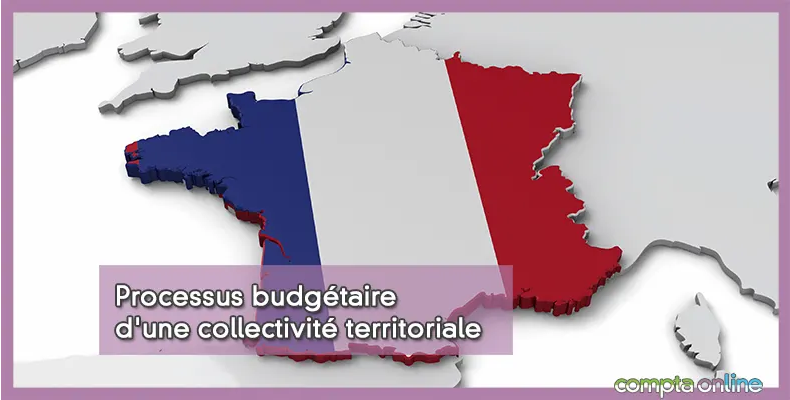France/Territorial government budget management
The budgetary management of local authorities is very different from that of private sector companies and from management control methods.

No expenditure may be incurred if it has not been provided for under a budget heading.
Local authorities, municipalities, departments and regions, are legal entities under public law distinct from the State. Also known as local authorities, they are governed by the provisions of Article 72 of the Constitution, which provides in particular for the principle of free administration.
The services provided by local authorities must be budgeted for. This is why tools dedicated to the budgetary management of local authorities have been created.
This is the case of Simco , a tool for budget preparation and forecasting, a partner of major publishers. The revenues of the local authority can be simulated. The tool presents a certain number of graphs and ratios on different themes such as the intersection between revenues and operating expenses, the jaws effect, the debt reduction capacity, the wage bill...
It is interfaced with public accounting software such as Berger-Levrault for example.
Principles and budgetary process of local authorities
The 6 main principles of budget management for local authorities are annuality, unity, universality, speciality, sincerity and balance.
Annuality refers to the annual authorization to collect taxes. Even if the budget of local authorities is voted by 15 April at the latest, amending decisions (for the entire budget) and a supplementary budget (to allocate surpluses) may be voted during the year.
The principle of unity does not prohibit the creation of annexed budgets, separate from the primary budget, and autonomous budgets for local public establishments (schools, for example).
Revenue and expenditure are allocated according to the rules of public accounting.
Four budget documents can be produced. The initial budget is a provisional document which defines and authorises the revenue and expenditure for the financial year which coincides with the calendar year. The amending decisions make it possible to adjust this initial budget.
The administrative account records the revenue actually received and the expenditure actually incurred. It shows the surplus or deficit for the financial year.
The management account drawn up by the accountant gives the receipts and expenditure recorded. In principle, it must correspond to the executive's administrative account.
In municipalities of more than 3,500 inhabitants, departments, regions, the vote of the budget is preceded by a debate on budget orientation. Simco allows you to edit a budget orientation report (ROB) in a few clicks.
The vote of the budget is done after the preparation of the administrative account of the previous year, often by section, by chapter and even by article. It will then be executed, i.e. implemented by the executive before being controlled.
Revenues and expenditures of local authorities
The revenues of local authorities come mainly from the management of their property, local taxation and State grants.
When we talk about the domain of local authorities, we are talking about both the movable or immovable public domain, assigned to the public service (school...) and inalienable, and the private domain, which includes all other property. Any occupation of the public domain gives rise to the collection of a fee, with some exceptions, notably for associations.
Direct local taxation includes housing tax, property tax and the territorial economic contribution. To these must be added transfer duties and vehicle registration fees.
State grants are a global envelope provided for by the Finance Act. They include a global operating allowance, equipment allowances, and allowances for the transfer of competences linked to decentralization.
Here again, Simco offers a dedicated solution since it is possible to simulate in a simple and accurate way, all the allocations and taxation of each municipality or inter-municipality.
Expenditures are classified into operating and investment expenses. The compulsory operating expenses are those linked to the community's own competences.
Structure of a commune's budget: operating section and investment section
|
Operating section |
|
|
Revenue |
Expenditure |
|
Communal taxation State subsidies Tax compensation Revenue from the domain Revenue from services |
Personnel costs Service-related expenses Maintenance Transfers to organizations Interest on debt Gross savings (depreciation and provisions) |
|
Investment section |
|
|
Revenue |
Expenditure |
|
Gross savings Revenues of an orderly nature (depreciation and provisions) |
Capital repayment of debt Net savings |
|
Unallocated investment revenue Investment grants VAT compensation fund Borrowings |
Investment expenditure |
Budgetary control of local authorities: example of municipalities
The budgetary control of local authorities is carried out by the public accountant, agent of the State, the prefect (control of legality) and the regional audit chamber (judicial control).
The former pays the expenses on the basis of the supporting documents and the control of the regional audit chamber.
The second, the prefect, assesses the legality of budgetary acts which are administrative acts. The initial budget is transmitted to him. He then has a period of 30 days to check the overall balance and by section.
The transmission of the administrative account is carried out within 15 days following its vote by the Assembly. Remedial measures are envisaged in the event of an excessive deficit (5 or 10% depending on the size of the commune). Below this threshold, the balance will be restored during the following year.
Source: www.compta-online.com


